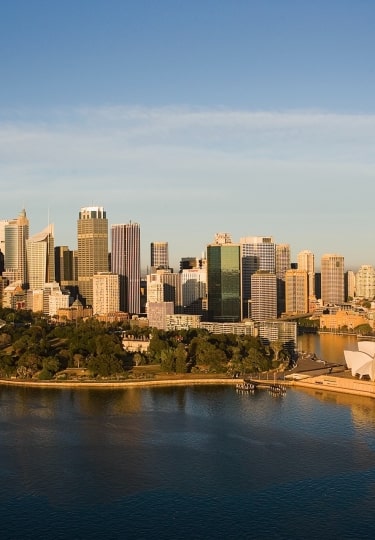While the country is known as a bastion of sun-kissed surfing beaches and BBQ weather, the best time to visit Australia is from the Southern Hemisphere’s spring through fall—specifically the months of October to April.
The atmosphere on the beaches is better, sports, cultural and festival calendars are complete, and al fresco dining is almost guaranteed.
Given Australia’s vast size, the climate varies considerably, not just between seasons but also between regions. This is essential to consider when planning, as it’s a country best explored by hopping between its cities and states on an extended vacation.
While Cairns in far north Queensland is still enjoying tropical winters, Tasmania will be seeing plenty of rain, so visiting during and on either side of summer (December to February) will ensure warm and sunny weather, no matter how many destinations you choose to fit in.
Visiting Australia By Season
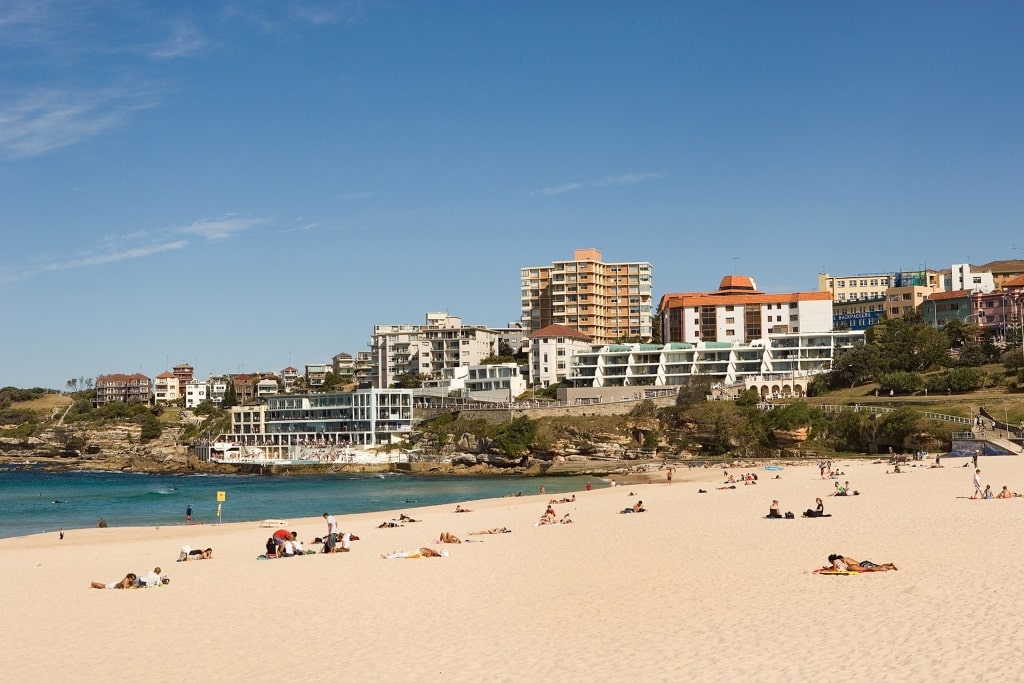
Bondi Beach, Sydney
Summer
With the sun shining, the beaches inviting, and everyone outside soaking up the atmosphere, summer (December to February) makes for the best time to visit Australia.
While tropical North Queensland is experiencing its wet season during these months, the main cities of Sydney and Melbourne are dry. Luckily, the showers don’t last for long up the top, and when they do come, they make the rainforests even more magical.
The balmy 73°F to 88°F (23°C to 31°C) that Cairns sees is also an excellent reward for any short spouts of rain.
In the south, Sydney is hovering around 57°F to 81°F (14°C to 27°C), and Melbourne a touch less. Tasmania also has some fantastic summer days with temperatures ranging from 55°F to 72°F (13°C to 22°C).
If you want to travel the whole way down the east coast in one trip without any real weather worries, then summer is undoubtedly the best time—the crowds only add to the atmosphere on places like Bondi Beach.
Fall
For those who venture to Australia in fall (March to May), expect bright orange and yellow foliage around Melbourne and Tasmania, the potential to spot migrating whales on boat trips, and plenty of food and wine-focused events. Summer may be over, but the festivities and cultural celebrations certainly aren’t.
The same can thankfully be said about the weather, with warm days and a lack of rain, at least until late fall. The tropics in north Queensland are just slightly cooler than in summer, while Sydney’s temperatures are around 53°F to 77°F (12°C to 25°C), and slightly cooler in Melbourne and Tasmania. For wine lovers, March is usually when the harvest starts around Melbourne’s vineyards.
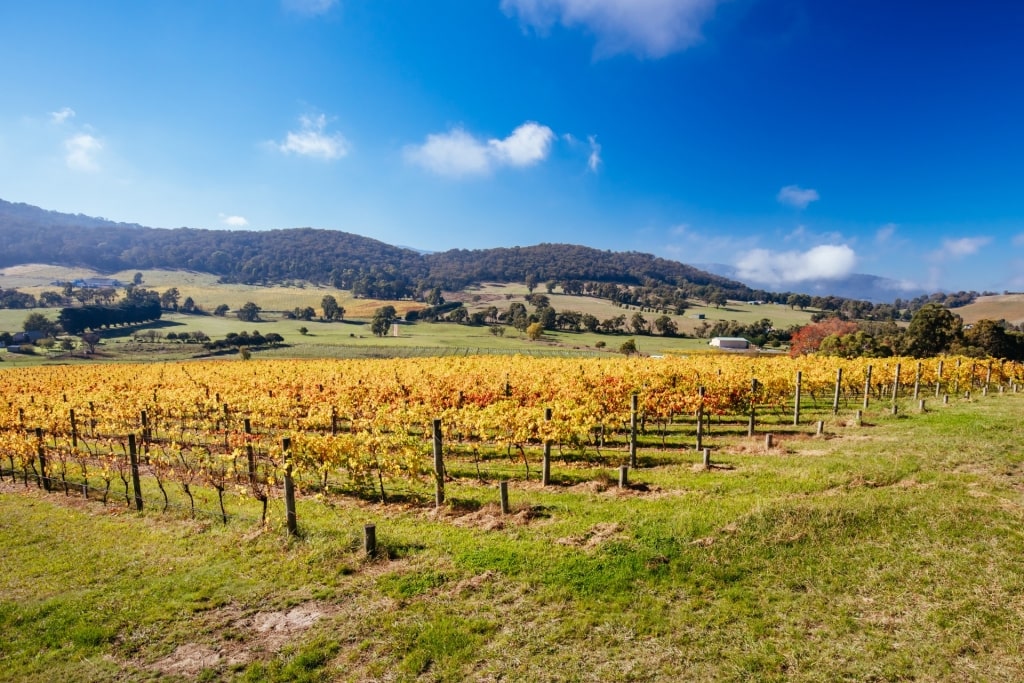
Yarra Valley, Melbourne
Winter
If you want to avoid the chance of rain, then winter (June to August) is not the best time to go to Australia. Temperatures in northern Queensland are around 62°F to 79°F (17°C to 26°C), and in southern Tasmania 41°F to 54°F (5°C to 12°C).
For city seekers, Sydney’s thermometers are hovering around 46°F to 64°F (8°C to 18°C), with Melbourne slightly below.
The southern mainland will see around nine rainy days during winter, while Tasmania has close to 15. June is usually one of the wettest months in Sydney, while in Tasmania it is September.
Spring
If you want sunny days but slightly milder temperatures, then spring (September to November) is the best time to visit Australia.
While tropical North Queensland is still clocking a pretty standard 72°F to 84°F (22°C to 29°C), the wet season is still yet to arrive, meaning humidity isn’t so intense.
Further south, the temperatures in Sydney are between 52°F to 73°F (11°C to 23°C), while Melbourne and Tasmania are a few degrees less. Rain is minimal, although slightly more likely the further south you head.
Spring is especially wonderful for hikes around waterfalls and rivers when waters have been replenished, and it’s also when the lavender has started flowering in Tasmania.
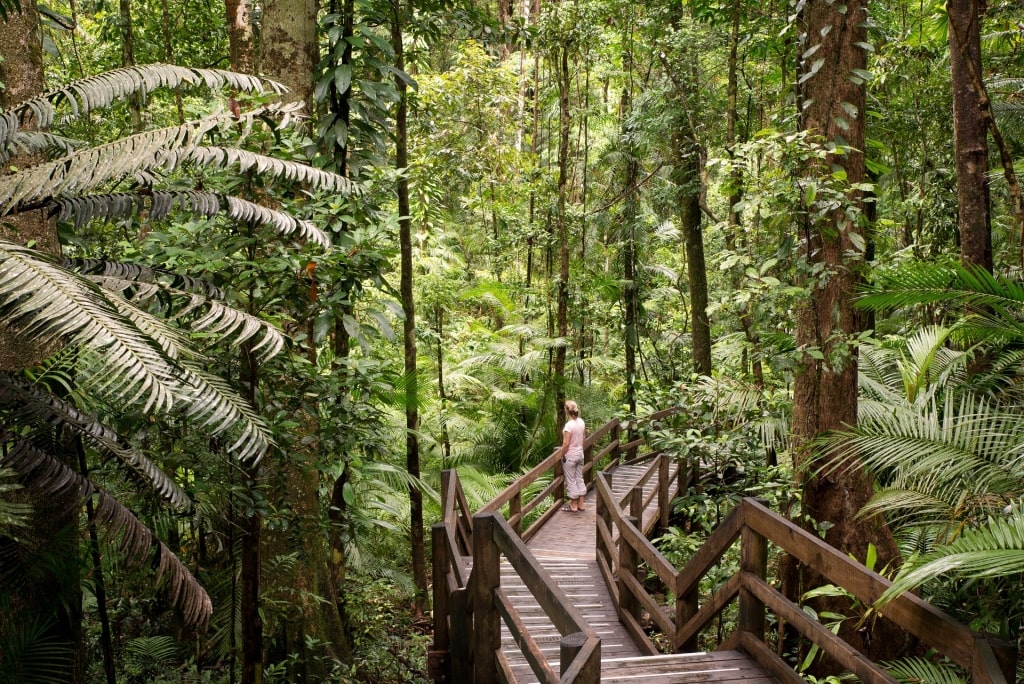
Daintree National Park
When is Rainy Season?
In Queensland, the rainy season is from November to March, although being in the tropics with vast areas of rainforest, drizzle can come and go quickly at any time of year. The showers, even in the rainy season, can be heavy but usually pass fairly quickly.
In the southern part of the country, around Sydney, Melbourne, and in particular, Tasmania, the rainy season is mainly confined to the months from June to August.
There are still plenty of dry but cloudy days in between, and it’s when locals can make use of all the fantastic museums and galleries in the state capitals.
When is High Season?
The most popular time to visit is from December to February, Australia’s summer, when the weather is at its warmest in the south’s most famous cities and beaches.
Not only is it fantastic if you’re escaping the cold in the Northern Hemisphere, but a sunny lead-up to Christmas is quite the novelty. It’s also wonderful to see Australian beaches in full swing, experience the outside coffee culture of Melbourne, or explore Tasmania’s incredible natural hiking trails in glorious sunshine.
Further north, Queensland does experience its rainy season during this period. However, this shouldn’t be a reason to stay away.
Being in the tropics, the sun still shines, temperatures are still high, and the showers never really last too long either—just prepare for a little higher humidity. It’s also a great time to see sea turtles nesting in Queensland.
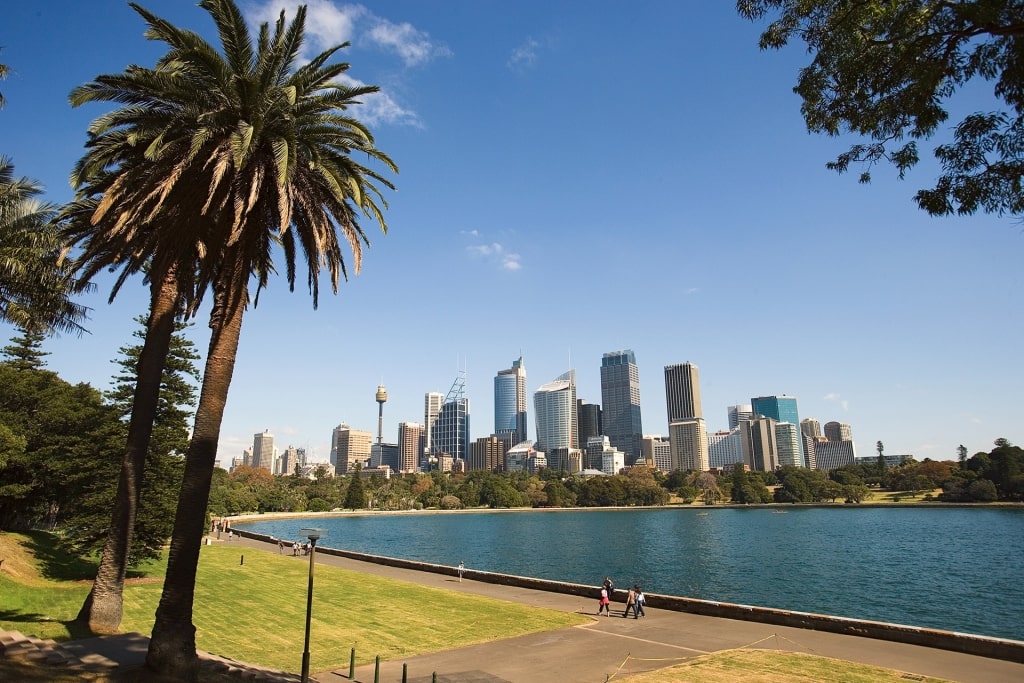
Sydney
When is Shoulder Season?
Late spring and early fall are Australia’s shoulder seasons, during the months of October, November, March, and April. These months are the best time to go to Australia if you’d prefer your midday sun slightly milder but still with beaches and tanning on the cards.
There are also still plenty of events happening, and hiking is far more pleasant with the slightly lower temperatures.
When is Low Season?
Winter (June to August) is low season in Australia. Days can be rainy, especially around Melbourne, and the atmosphere is somewhat lacking as there isn’t even Christmas on the cards. Tasmanians at least get to enjoy the aurora Australis illuminating their skies.
Ready to explore Australia’s sun-kissed coastline and cultural cities? Browse our Australia cruises to find your next dream vacation.
